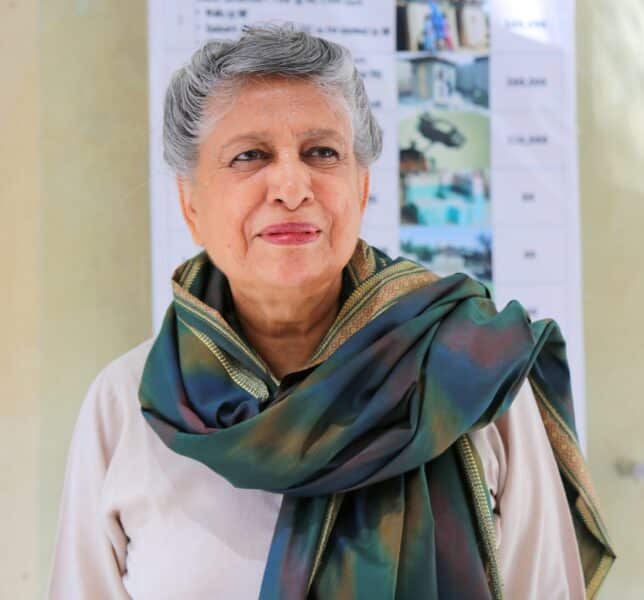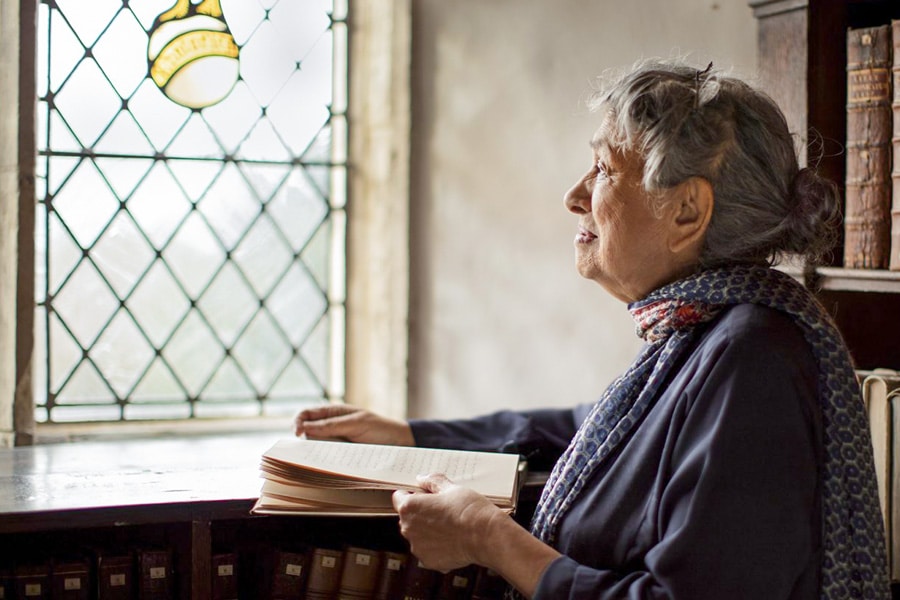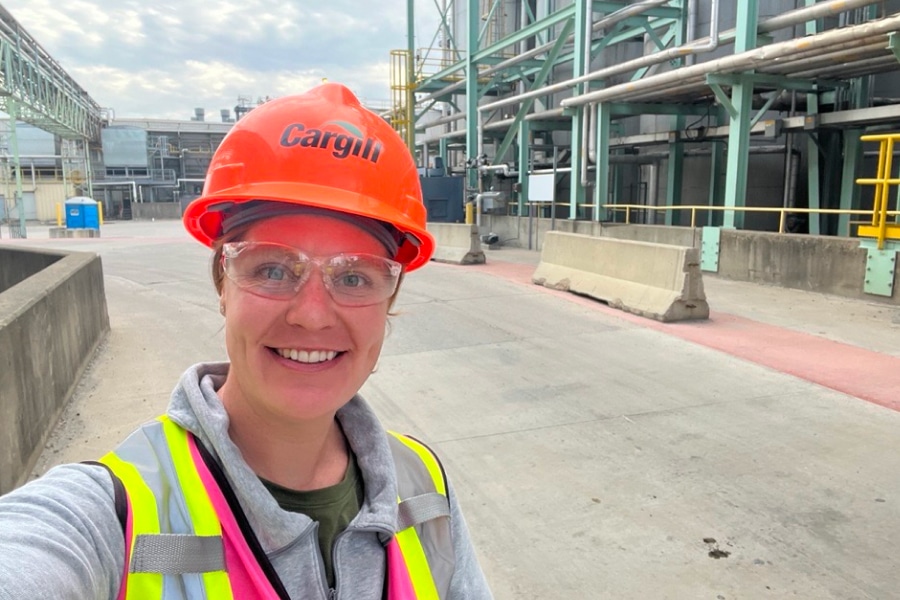Yasmeen Lari is best known for being Pakistan’s first female architect. Working at the intersection of architecture and social justice, Lari strives to create a meaningful language of design and building rooted in the needs of her community through her UN-recognized NGO Heritage Foundation Pakistan.
Built spoke to Lari about her unusual approach to architecture, conservation and community, as well as her vision of a more community-focused future of design.
Designing a new nation
Lari was inspired to become an architect by her father’s work on infrastructure in a newly independent Pakistan.
“I grew up just after my country got independence in 1947,” she said. “My father had been a high-ranking, sort of a civil servant with the British in the Indian Civil Service so, although he was very young at the time, when Pakistan came into being, he was in charge of some very huge developments of planning and setting up cities. He would often mention that he felt that because there was a new country now, we needed architects and planners and designers to pursue a new vision. I guess I just took the cue from him.”
Lari decided she wanted to do something for her country, returning to Pakistan after she completed her studies with the hopes of discovering more about the roots of her homeland’s aesthetic vernacular.
Curious why 3 million AECO professionals worldwide use Bluebeam to finish projects faster?

“We were colonized for 150 years, and in the whole of the 19th century it was believed that the traditions that the colonies had were of no value and the culture was of no value,” she said. “Architecture was of no value because it did not correspond to European standards. So it took some time to try to understand what we actually were as a nation. It was a new nation. It had to have new aspirations.”
In her early career, Lari struggled with these distinctions. “It was very difficult when you had grown up with a kind of an inferiority complex, of not being quite as good as Europe and the Western culture,” she said. “So there was a lot of discussion about what architecture should be like in a Muslim country, but there never was an attempt to understand the spirit of what our country has been or what the culture has been. Somehow we were not able to find our way toward what Pakistani architecture should be about.”
Rediscovering heritage
For a long time, Lari worked to reconcile these complex feelings in her design practice, until one day she decided she wanted to connect more deeply with her motherland’s design traditions.
“For the longest time, as you know, I had a career like every other architect,” she said. “And then at some point in time around 2000, I decided, well, this somehow is OK, and I’ve done what I wanted to do. I’ve built some rather large buildings and I had a terribly inflated ego and all the rest of it. So I decided that the time had come for me to now sit down and start writing my books.”

Lari and her husband had collected many materials on the heritage of Pakistan, and her husband had become a noted historian after selling his insurance company. Lari was inspired by his example to turn her eye for design toward her nation’s history.
“When both my husband and I came back after having finished our studies, I think for me particularly, it was very important to try to understand what my roots actually were,” Lari said. “And that’s why we established the Heritage Foundation of Pakistan.”
Community-focused architecture
Lari’s research work led her to discover a new way of looking at architecture. “My work has really been about trying to understand what my country needs,” she said, “so I’m not really bothered about styles anymore. I just want to draw from my own traditions so that it would resonate with the feelings of people for whom I’m designing. Because it’s all about co-building, so it’s not even mine anymore. They are the ones who really embellish it and make it beautiful and personalize it. So it’s a totally different way of even looking at architecture.”
In Lari’s co-building practices, she works with local communities, particularly women, to create functional structures that also serve as a source of inspiration and empowerment. “I need to design in a manner that it would give agency to women who have no voice otherwise, it’ll give them dignity, who have nothing at the moment,” Lari said. “So really, I think the architecture that I’m trying to practice is to see how I can help people. Not just to have a safe shelter, but also to somehow give more meaning to their lives in some way.”
Lari describes the spontaneity of this kind of co-building architecture as “tightrope walking,” as she works to maintain a careful balance. “Lots of factors came into play once I started to work with people and work with women particularly,” she said. “I had no idea when I first started what it would mean.”
Disaster responsive design
Through her community-focused co-design practices, Lari works with impoverished communities to create replicable systems of designing and building necessary structures in areas suffering from the impacts of natural disasters.
“Pakistan is supposed to be the front-line state in terms of whatever disasters are happening,” she said. “I mean, last year we had this really devastating flood, which meant the displacement of 33 million people. Now that’s more than even many countries. And I don’t think that anybody outside of those who have actually experienced it can even understand what it means in terms of deprivation of every kind.”
Instead of waiting for outside funding, Lari wants to empower communities to rebuild on their own—faster, more efficiently and on their own terms. “We have to understand that no money in the world will there be enough to house 3 million families,” she said. “I don’t believe in that system. I felt that unless I can get the tools into the hands of people that they can plan for themselves, they will be in the same state every year.”
Instead, Lari says that she believes communities should be empowered to save themselves by rebuilding when disaster strikes. “I’m very pleased to report that it’s happening,” she said. “Many thousands are now on their way to food security. The next step is to make toilets, where they’re beginning to do it themselves. The third step, which is now slowly starting for them, is to build a safe one-room house. And once they’ve done that, they can build their own schools. Thank you very much. When they’ve done that, they can look after themselves during the floods.” Through embracing this new model of responsive, community-focused design, Lari hopes to place architecture back where she believes it belongs—in the hands of her people.











